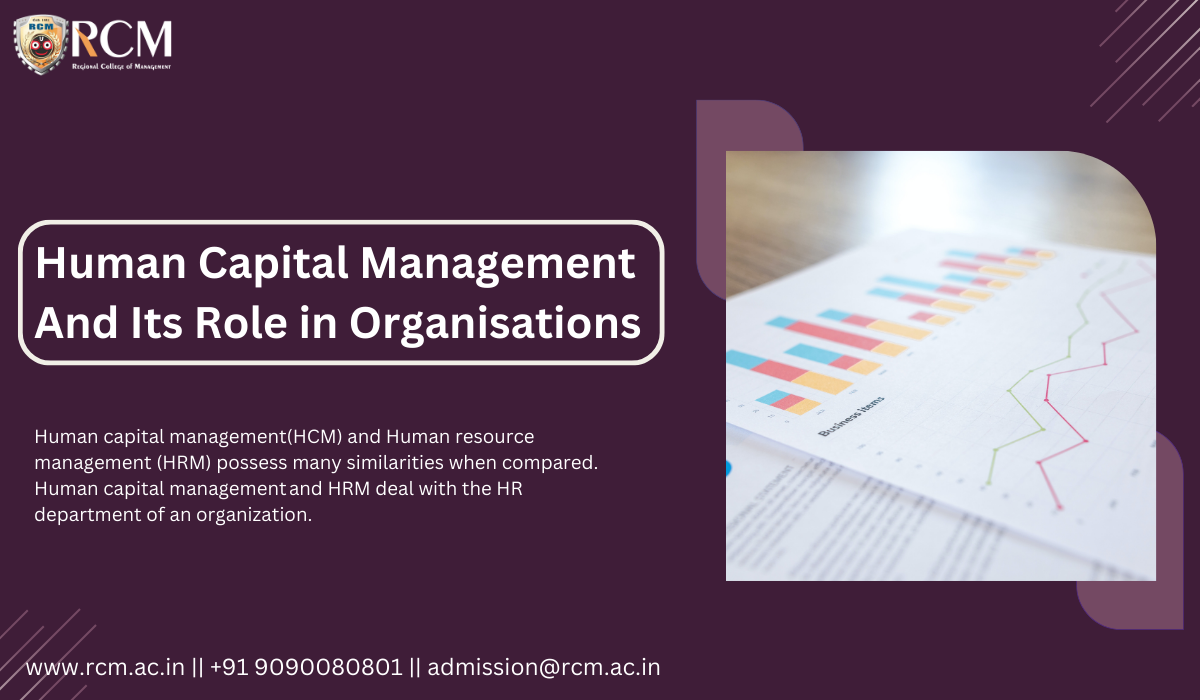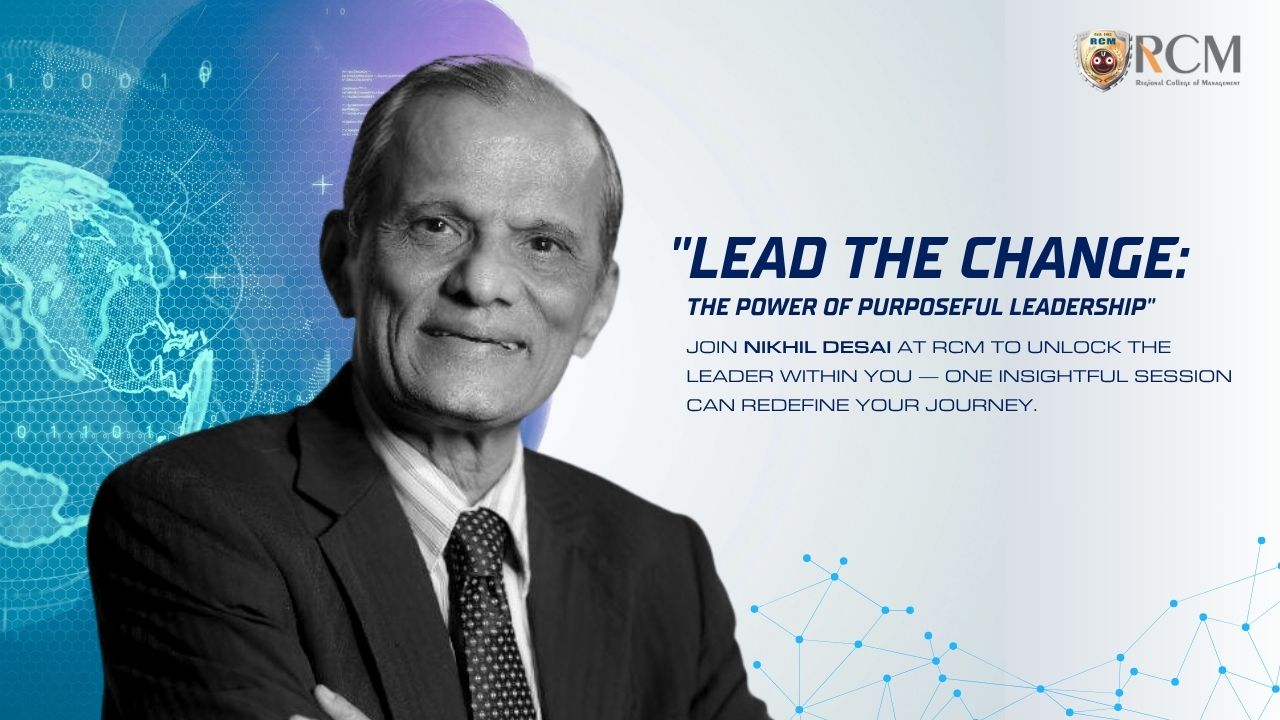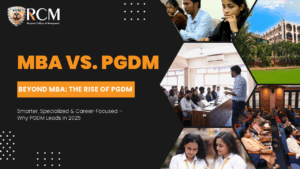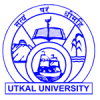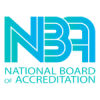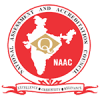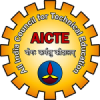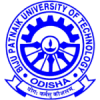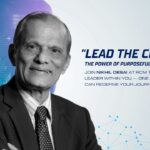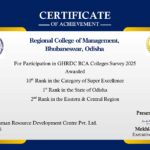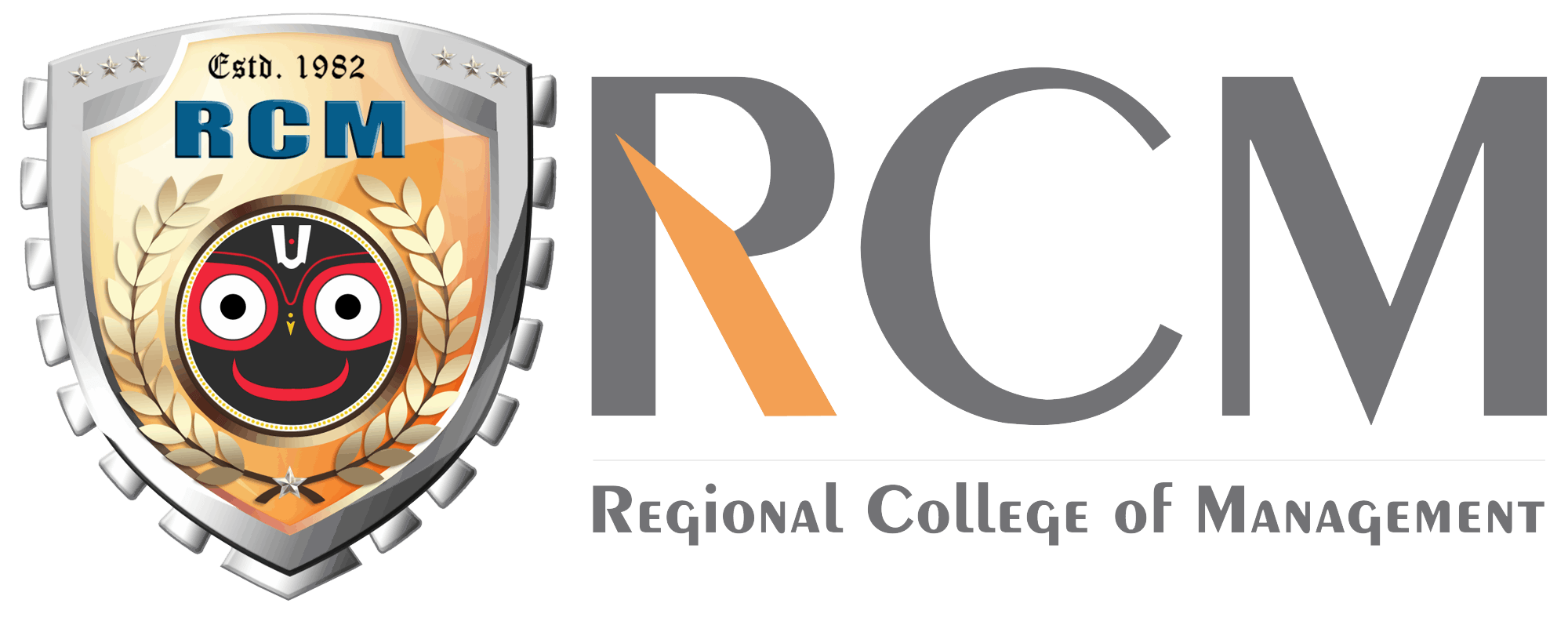Written By, Prof. Pragyan Paramita Das
Introduction:
In every organization, functions of human resource management are an integral part of the system. Nowadays, only HRM is not sufficient to run the organization. Some new concepts and functions like human capital management have entered the corporate market not only to run the organization but to prosper and outnumber their competitors in the tough competitive world.
Human capital management (HCM) and human resource management (HRM) possess many similarities when compared. Human capital management and HRM deal with the HR department of an organization. It is the foremost solitary body responsible for carrying out organizational processes in business environments. The personnel manager advises on effective workforce management, ensuring alignment with business goals and employee well-being.
Both these terms carry out functions that are related to issues such as:
- Recruitment.
- Training.
- Employment.
- Orientation.
- Payroll.
- Performance analysis
The word “Human Capital” was introduced by A. W. Lewis in “Economic Development with Unlimited Supplies of Labour”. Human Capital Management is defined as the process of acquiring, training, managing, and retaining employees for them to contribute effectively to the processes of the organization. In simpler words, upgrading the existing skills of an employee and extracting the best out of him/her refers to human capital management.
Employees are the lifeline of an organization. An organization can’t survive if there are no employees. The organization runs with the help of individuals who contribute in their own way to its success and productivity. Employees spend the maximum part of their day in offices and strive hard to achieve the goals and objectives of the organization. Organizations should regularly motivate employees to strengthen their attachment and inspire them to perform at their best.
The Role of Skills and Experience in Human Capital
Every employee in his/her tenure acquires some set of skills through his experience, exposure, training and so on which further increase his/her productivity eventually benefitting the organization. Knowledge and expertise that employees develop in due course of time to further increase the productivity of organizations refer to human capital. Every employee tries his level best to sharpen his/her skills during his stint with the organization.
Human Capital: A Key Driver of Organizational Productivity
Human capital includes the collective stock of skills, attributes, knowledge, and expertise of employees, which directly increases organizational productivity. Every organization invests its money and resources to train new employees. Employees, in turn, work hard, upgrade their existing knowledge, and contribute in their own way to increase the productivity of their organization. Human capital plays a crucial role in increasing the productivity and output of an organization.
The Role of Human Capital Management in Workforce Productivity
Human Capital management refers to managing an organization’s employees for they to contribute significantly to the overall productivity of the organization. In layman’s language managing the workforce of an organization refers to human capital management. Human Capital Management has more to do with how organizations treat their employees. Do not treat your employees as mere laborers.
Ensuring Employee Growth and Development for Organizational Success
Senior management must ensure the timely growth and development of every individual concerned for him/her to contribute efficiently when required. Advising the top management, the key objective of every organization should be to train its employees so that they become efficient resources later on. In human capital management, organizations treat their employees as important resources that play an instrumental role in the productivity of the organization. The development and management of individuals in line with their key responsibility areas not only make them an indispensable resource in the future but also ensure their hundred percent contribution towards the organization.
Human capital management has multiple meanings and includes elements like HRM, personnel management, and organization management. Human capital management is also related to the strategy of developing employees and other operational objectives. In some instances, Human capital management, also referred to as a tactical approach, includes essential practices, systems, and processes. It is most likely used by many firms for managing their assets and development.
The difference between HRM & HCM
What is the difference between “Human Resources” and “Human Capital”? Perhaps the simplest explanation is:.”Resources” means “The total means available for economic and political development, such as mineral wealth, labor force, and armaments. A supply is available to use when needed. Capital is any form of wealth that helps produce more wealth.
Simply, by definition, resources are finite. 18/18
ChatGPT said:
We can strip coal, gold, and iron mines until we exhaust the supply. Capital can be infinite because we can use it to produce more. Human capital includes skills, understanding, knowledge, and experience—some of which may be innate.. From a broader perspective, human capital includes the character, ethics, personality, and creativity of a human being.
Even if we are born with these attributes, it is often required we spend time, effort, and money to retain or to grow them – thereby, increasing human capital. We may accumulate, maintain and increase human capital in many ways; through education, job training, work experience, life experience, investment in health, etc.
Time, money, and effort are spent acquiring human capital. Human capital management (HCM) is concerned with obtaining, analyzing, and reporting on data that informs the direction of value-added people management, strategic investment, and operational decisions at the corporate level and at the level of front-line management.
Human capital management focuses on measuring and managing people as valuable assets. Organizations gain a competitive advantage by making strategic investments in employee engagement, retention, talent management, and learning and development programs.
Traditional HR functions Vs human capital management
| HR functions | Human capital management |
| The human resource function performs work according to the law and company directives. | Human capital management is related to all employees’ issues and other elements such as employment, utilization, compensation, and development. |
| Uses simple benchmarking techniques. | Uses complicated evaluation techniques. |
| Host-only default outcome processes. | Can be driven regularly by HR. |
| Only expose integration of HRM. | Only executes interaction of human capital management. |
| Defines its true objective with a perfect reputation. | Can only be driven under some special case of organization performance. |
| Never defines its true objectives. | Defines its true objective with perfect reputation. |
| Hr function often delivers a major solution with the perfect end. | Can able to deliver solutions for minor instances. |
Source: (Higgins, 2010)
Human Capital Management-The scope
Managing human capital is now high on the corporate agenda. Businesses are looking to their people to drive up enterprise value and create sustained commercial advantage. People are the key to business success: whatever the particular strategy if people aren’t managed effectively, business performance will suffer.” Said Michael Jolly, Chief Executive, Penna Consulting.
HCM is the strategy for success in today’s people-centered economy. It starts and ends with the observation that people are the richest source of competitive advantage and provides a methodology for managing people to give their best at work. With HCM, business leaders gain a clear view of this critical asset, with the ability to target investment for optimum results – today and into the future.
The Evolution of HRM
Human resource management (HRM) is the strategic and coherent approach to the management of an organization’s most valued assets -the people working there who individually and collectively contribute to the achievement of the objectives of the business. Human Resources refers to human potential with infinite capabilities and capacity for beneficial engagement. However, potential alone does not guarantee productivity; one must seize opportunities to transform potential into real value.
The Evolution of HR: Beyond Physicality
Human Resources is a question of physicality.“HRM goes beyond day-to-day maintenance to the creation, evaluation, and strategic alignment of people management processes. HCM takes HRM to the next stage and gives HR professionals the opportunity to identify and focus on real value creation activities.” Said Sue Wotruba, Penna Consulting.
HRM: A Resource-Driven Approach
HRM tends to treat people as resources that can be expended and used up in the pursuit of business goals. It’s a perspective that has helped make organizations much more effective and efficient, but it tends to produce compliance rather than commitment from employees.
HCM: A People-Centric Investment Approach
HCM recognizes that people invest in their own human capital and will continue investing only if they feel valued and see a suitable return. It differs from HRM not in the processes it includes but in its strategic and people-centered approach to each process. In other words, Personnel deals with the transactional elements of managing people.
It is a functional and process-driven discipline. HRM adds a wider focus on how these functions can support the business. But HCM is nothing less than a comprehensive business management strategy that touches and aligns all employees and every part of their organization.
The key drivers of HCM in organizations
HCM refers to the management of an organization’s employees to contribute significantly to the overall productivity of the organization. Every employee tries his level best to utilize his knowledge & skills to benefit his organization & become an indispensable resource in due course of time. The drivers of HCM act as catalysts for effective human resource management. These drivers are of five major categories:
Driver-1: Leadership practices in organizations
(a) Communication: Managers should treat employees well so they develop attachment and loyalty to the organization. They shouldn’t just sit in closed cabins and impose ideas on others—they must communicate effectively with their subordinates. Employees should have easy access to senior management. Clear top-down communication helps employees understand their goals, objectives, and expectations.
(b) Inclusiveness: Management should sit with employees on a common platform to invite suggestions and feedback from them.
(c) Supervision: Senior executives and management must reduce the various levels of hierarchy between them and employees. Management must interact with and motivate the employees from time to time for them to give their level best.
(d) Leadership: Senior executives should support, lead, and influence the workforce so that they contribute effectively to the organization.
Driver 2: Employee Engagement
(a)Key Responsibility Areas: Key responsibility areas should align with an individual’s education, skills, expertise, experience, and interests. This way, work never becomes a burden for him.
(b)Commitment: Acknowledge employees’ outstanding efforts to keep them motivated and encourage them to work harder next time. Reward and appreciate high performers in front of others.
(c)Time: Effective time management prevents employees from feeling overburdened. Managers should distribute responsibilities equally.
(d)Evaluation: Top management must evaluate employee engagement from time to time.
Driver 3: Knowledge Accessibility
(a) Information Availability: Employees must have easy access to all relevant information required to perform their duties. Organizations must organize various training programs (In-house Training or Outsourced training) to constantly upgrade the existing skills of employees and acquaint them with new learnings.
(b) Team Work: Employees must be motivated to work in teams rather than working alone.
(c) Information Sharing: Encourage employees to share information with each other.
Driver 4: Workforce Optimization
(a)Human Capital Management (HCM) Practice
(b)Work processes: Senior management must define the work processes of employees well for maximum productivity.
(c)Working Conditions: An organization needs to provide excellent working conditions to the employees to expect the best out of them.
(d)Accountability: Individuals must be held accountable for their work. Get a commitment from employees and nothing like it, if everything is in writing.
(e)Hiring: Individuals responsible for talent acquisition must ensure that they hire the right candidate for the right role. Design a strong induction program for all the newly joined employees.
(f)Performance Management: Organizations must actively monitor and manage employee performance.
Driver 5: Learning Capacity
(a) Innovation: New ideas should be welcomed. Encourage employees to share new and innovative ideas that benefit the organization.
(b) Training: Training must be practical/relevant and designed to sharpen the skills of employees. Do not design training programs just for the sake of it. They must benefit the employees.
(c) Career Development: Employees must be aware of their growth plans in the organization.
(d) Learnings: New learnings should be valued by all in the organization.
Importance of HCM in Organizations
- HCM is essential for hiring, managing, training, and retaining talented and high-performing employees. HCM plays an important role in the recruitment process. It ensures that human resource professionals hire individuals who really deserve to be in the organization. Recruitment of the right talent is of utmost importance.
Effective Talent Acquisition Strategies
- Talent acquisition is one of the most crucial responsibilities of human resource professionals, often neglected in most organizations. Do not hire someone just because you need to fill a vacant position or your superiors have asked you to do so. Analyze the background of an individual thoroughly. Try to find out why someone really wants to join your organization. Remember money should not be the only criterion for why someone wants to change and join a new organization. An individual who has been assigned the role of acquiring new talents should not forget to check an applicant’s past experience, interests, professional qualifications,s and reasons for changing the previous job. If you really like someone, try to do some reference checks as well. Do discuss with the applicant before calling up his previous organization or boss, or else it might land him/her in trouble.
- Human Capital management plays an important role in orienting a new employee to the system. Boring and meaningless induction programs lead to confusion and an employee eventually loses interest in the organization. Do not load someone with unnecessary information, the very first day he steps into the organization. Believe me, he will run away. Make him feel comfortable. Ask him/her not to bring lunch from home. Order lunch from outside and ask all his team members to have lunch together. Such small initiatives go a long way in breaking the ice among team members.
Continuous Learning and Skill Upgradation
- It is essential for employees to upgrade their knowledge with time to cope with changing situations. Human Capital Management helps in training the employees and making them an indispensable resource for the organization. Motivate employees to take up special courses or online programs which would help them in their job. Employees who do not brush up on their skills from time to time find it difficult to survive in the long run. Inculcate the habit of reading. Internet is also one of the good options to keep oneself abreast with the latest developments.
Human Capital management plays an important role in increasing the efficiency of employees. Individuals are in a position to contribute more towards the system, eventually increasing the overall productivity of the organization.
To conclude, human capital management is important for:
- Hiring the Right Talent
- Orienting him/her to the organization
- Making a new employee feel comfortable
- Training employees in order to constantly upgrade their skills
- Retaining employees
- Making employees self-sufficient and preparing them for adverse conditions
Human Capital Management helps in developing skills of employees which help them stand apart from the rest.
Benefits of HCM in Organizations
- Human capital management helps in extracting the best out of employees. It also plays an instrumental role in increasing the efficiency of employees, making them an indispensable resource for the organization.
- Human Capital Management enables human resource professionals to hire the right candidate for the right role. Talent Acquisition is one of the most crucial functions of an individual representing the human resource vertical.
- One wrong employee can lead to problems and confusion within the system. Superiors and management do not have to spend much of their time and energy in training someone who already is aware of his roles and responsibilities. Human Capital Management is beneficial in recruiting the right talent for the organization.
- Hire employees who really deserve to be in the system. The process of Human Capital management involves hiring the right candidate; orienting him to the system and making him comfortable for him to deliver his/her level best. It is generally observed that boring induction programs are a mere waste of time and energy.
- Human resource professionals should not design induction programs just because protocol demands the same. Induction programs should be interactive sessions where the trainer should acquaint the new employee with the policies of the organization. Human resource professionals should act as a bridge between senior management and employees.
- Human Capital Management enables the free flow of information between superiors and subordinates. Employees have easy access to the senior management and hence there is no room for confusion or misunderstandings. Half of the problems evaporate when colleagues discuss matters amongst themselves.
- Training and skill development activities are essential for upgrading the existing knowledge of employees. Training program increases the efficiency of employees and eventually increases the overall productivity of the organization. It is essential for every employee to keep himself/herself abreast with the latest developments in his/her field. Human Capital Management makes an employee self-sufficient. It enables employees to adapt to changing situations easily. A well-trained employee can bring better productivity than someone who is not trained.
- The performances of employees must be evaluated from time to time. Superiors ought to keep track of subordinates’ work. Proper feedback is essential. Human Capital Management helps in monitoring employee performance. Special online reporting systems help senior management to have direct access to the work of their juniors. Employees are aware of what is expected of them.
- Human Capital Management highlights the importance of soft skills and personality development for employees. An employee who can speak well is always considered a troubleshooter by his fellow workers. Do not hire someone who has poor communication skills. Someone with average communication skills can still be considered.
Corporate Implementation of HCM
RAMCO SYSTEM; PUNE:
Enterprise software provider Ramco Systems, which provides cloud and mobile-based ERP solutions will be looking at tapping the American markets for growth in the coming year. CEO, Ramco System told ET that going ahead, the company would focus on expanding its human capital management (HCM) vertical in the Americas where it had launched its services in October 2015. Ramco currently has five customers in the USA, but the CEO expects this to go up considerably in the next year.
We will increase the pace of customer acquisition and will be adding elements to the offering that are relevant for the American market,” he said. Benefits form an important part of the American HR and payroll system and the company has worked at integrating areas like benefits enrolment and administration into its existing product to be able to reach out to more customers.
HR Tool as the Flagship Product for Growth
“The HR tool will be the flagship product to spearhead growth and we expect it to grow well going forward,” he said. Launched in 2013, this is also available as a mobile platform that enables users to carry out all critical functions on the mobile. Aggarwal expects this to be an important factor when it comes to acquiring new customers given the rapidly increasing adoption of cloud-based technologies the world over.
Customer Growth and Market Expansion
At present, Ramco has over 400 customers for its HCM product and is adding two new customers every week. Aggarwal said that the business had grown at over 100% year-on-year since its launch (109% in Q2FY16). The human capital management business currently comprises about 27% of the company’s total revenues, with the other key business segments, ERP services, and Ramco posted a net profit of Rs 9.9 crore for the quarter that ended September 30, 2015, and a consolidated global income of Rs 108cr of which about 70% is from international operations.
The company already has tie-ups in place for markets like Europe, Asia, and the Middle East where it has a considerable presence. In addition to this, the company would also strengthen its presence in markets like Australia and South East Asia for its logistics solutions.
MANAGEMENT INSTITUTE & CORPORATES; XLRI- ACCENTURE, BANGALORE
One of the oldest management institutes in India, XLRI with Accenture, has launched an HR training academy dedicated to the human capital management needs of the growing information technology and business process outsourcing industries. The Accenture and XLRI HR academy is dedicated to providing recent graduates seeking careers in HR with specialized skills geared to these industries, an Accenture statement said.
The academy offers a 24-month program for recent university graduates who have joined Accenture as trainees in the HR department, it said. The first batch has 34 trainees, who will be part of a work-study opportunity, wherein they will be employed with Accenture as they undergo the program conducted jointly by XLRI and Accenture, with courses developed jointly by the two organizations, the statement added.
- they are lacking. It not only benefits the employees but also the entire organization.
Various Ways of Organizations to Increase Human Capital
It is rightly said that the success and failure of any organization depends on its employees. Every employee in his/her own way contributes to the development of the organization. One of the major responsibilities of a human resource professional is to source the right talent for the organization. Recruit the right person for the right role.
Job mismatch leads to confusion and eventually decreases overall productivity and output. Orienting new employees to their jobs must not be neglected. Mere piles of documents and employee handbooks are not sufficient to welcome a new employee. Boring and unrealistic employee induction programs often leave employees in a state of dilemma.
Design a suitable induction program that not only acquaints a new individual with the systems, and policies of the organization but also makes him feel comfortable within the system.
It is essential for every organization to upgrade the skills of its employees for them to cope well with the changing times. Employees must be trained from time to time for them to utilize their knowledge to the fullest when required and become indispensable resource for their organization.
Human resource professionals or training managers must not design training programs just for the sake of it. Understand how your training program would benefit the employees. Management can also sponsor the education of their employees for them to sharpen their skills and increase human capital. Realistic training programs increase the efficiency of an employee, which further increases the productivity of the organization.
1. Monitoring Performance
Monitoring the performance of employees also increases human capital. Understand what your employees are up to? Managers must take regular feedback from their subordinates. Introduce the concept of an online weekly report system, where each employee would have his/her own login ID and password. At the end of every week, employees should fill out the online weekly report, which automatically goes to their reporting bosses for performance evaluation, comments, and feedback. This function involves recording, maintaining, and tracking employee performance. This way, superiors can also keep track of their employees’ progress.
2. Direct Communication
Subordinates must be able to walk up to their manager’s cabin in case of queries. The “Hitler Approach” does not work nowadays. Problems must be discussed in an open forum for everyone to give their suggestions, feedback, and ideas. Do not ignore even the minutest problem. Any problem left unattended may lead to a serious situation later on. Each employee should have a say in the major decisions of the company. This way employees feel attached to the management as well as the organization. You never know when someone might come up with a brilliant idea.
3. Defined Job Responsibilities
To get the best out of employees, clearly define their job responsibilities. Design key responsibility areas based on their past work experience, educational qualifications, and areas of interest. KRAs should reflect the essential functions of their job, enhancing employee satisfaction and productivity.
4. Motivation
Managers must motivate employees regularly so they work harder in the future and inspire others. Recognize talented employees by offering lucrative incentives or giving them a decent salary hike.
Ways for an employee or individual to enhance his Human Capital
Every employee should strive hard to increase his/her value in the organization. One should contribute his/her level best to accomplish the goals and objectives of the organization. Employees shouldn’t just treat their organization as a mere source of earning money. There is no age limit for education. One can constantly keep on upgrading his skills.
Continually seeking education makes an employee aware of the latest developments and opens his/her mind up to new ideas. Search for new courses resumes would help you contribute more towards your organization. Employees shouldn’t register themselves for any course just for the sake of adding degrees to their resume. One must research thoroughly before enrolling in any course.that
Employees should not forget to check the credibility of the course or for that matter the authenticity of the degree. Discussion with superiors helps a lot. They will be able to guide the employees. Education goes a long way in preparing to face new challenges in professional life. Employees should strive hard to keep abreast with the latest technologies and progresses in the industry.
Employees should not restrict themselves to a nine-to-five job
There is no point in limiting oneself to predefined jobs or roles. Employees should try to develop new skills that will help them with their overall performance. Employees should be flexible and open to changes and new leanings. Being rigid will lead to nowhere. An employee should never bring his/her ego to work.
It is absolutely okay if we are not aware of something. There is nothing to be felt ashamed of. Discussion with colleagues helps a lot.
Try to get involved as much as you can
A multitalented employee always performs better in situations of crisis than someone who just works for himself/herself and not for the organization. An employee should always keep his eyes and ears open. Be alert and try your level best to grab new information and learnings. Believe me, it will help you later and make you a dependable resource. Try to work in teams.
Information sharing also increases the efficiency of employees and eventually human capital
Sit with your team on an open forum and brainstorm new ideas and concepts. Knowledge is something that can never be stolen.
Volunteer for various training and skill development activities
Embrace training opportunities. Your organization invests time and resources to support your growth. Stay open-minded and engaged. Interact with the trainer and try to learn and discover new things.
Don’t attend office just to earn your salary. Make it a point to do something new every day. Work never becomes a burden for employees who believe in experimenting and doing new things. Read a lot. Pick up magazines, newsletters, and journals that will help you increase your knowledge. Don’t wait for someone else to push you for things. Start it RIGHT NOW!
Start your day with a smile. It will help you contribute more towards your organization.
Strategic Human Capital Plan and its key components
Employees – their knowledge, experience, skills, innovative ideas, and concepts are all valued possessions within an organization. An organization must understand its employees well to expect the best from them. Human capital management refers to developing strategies to hire, manage, train, develop, and retain top-performing employees.
Human Capital management includes the following:
- Recruiting the best available talent
- Career development Plans for employees
- Coaching and mentoring employees
- Motivate employees to deliver their level best
- Developing performance management strategies
Strategic human capital management refers to the alignment of human capital strategies with the goals, objectives, and mission of an organization through extensive planning, analysis, and management of human capital plans.
Human Capital Planning helps an organization to design human capital policies, strategies, and programs to increase the efficiency of employees and help them accomplish the goals and objectives of the organization. Implementation of a human capital plan helps human resource professionals to hire the right candidate, train him, upgrade his/her skills, manage him/her, and also retain an employee.
The key components of a strategic human capital plan:
- Clarity in Direction
- The clarity in human capital goals
- Strategies/Policies to accomplish already defined goals and objectives
- A foolproof implementation Plan
- An accountability system
Clarity in Direction
This component involves the complete understanding of an organization. It is essential to understand the budgetary constraints, the vision of an organization, the requirements, and expectations of stakeholders, customers, senior management, and the needs of the current workforce to achieve a clear strategic direction.
Discuss and collect data from stakeholders, customers, and employees to understand their needs and expectations. It will help you define the vision of an organization and its workforce. Try to analyze the current state of employees and where they would exactly like to see themselves and the organization two years down the line. Such an analysis will help you understand the gaps in the system.
The Clarity in Human Capital Goals
Understanding the gap between the current and desired state helps in developing human capital goals which would not only increase the overall efficiency of employees but also make them feel attached to the organization.
Set human capital goals such as
- Only the best talent should be hired.
- Developing realistic induction programs for new employees.
- Continuously develop skills of the workforce in line with the requirements.
- Retaining hard-working and dedicated employees
Strategies/Policies to Accomplish Already Defined Goals and Objectives
Once goals and objectives are set, organizations design strategies and policies to achieve them. Human resource professionals create long-term plans to keep employees satisfied with their jobs and performing at their best.
Delegate responsibilities to employees as per their skills, educational qualification, expertise, and interest areas. Assign a team leader. Team Managers should take proper feedback from team members to monitor their performances. Know what your team members are up to? Managers must interact with their team members on a regular basis to understand their expectations from the system and also to keep track of their growth in the organization.
Implementation Plan
Implementation Plan includes the actions and steps required to implement human capital plans.
Successful implementation plans include:
- Allocating a responsible resource for the same
- Setting a timeframe/deadline for implementing human capital plans
- Allocating budgets for the same
Accountability System
No process or plan is successful unless and until it is managed well. It is essential to keep track. The accountability system involves measuring the success and failure of an implemented plan.
Models of HCM:
1. Unique Skill Set Model
Human capital management refers to the development of human capital through regular training, skill development activities, and retaining talented employees. An individual who strives hard for the maximum part of the day to accomplish the goals and objectives of an organization are its real asset. Machinery, capital, innovative ideas, and office furniture do play an essential role in the successful running of an organization, but nothing would work out if an organization does not have employees who really think for it.
Employees must develop a sense of attachment and loyalty towards the organization. From where do you think attachment comes from? Is it only money? The answer is NO. Money could be one of the factors.
A feeling of loyalty towards an organization cannot develop in just one or two days. It takes time for employees to inculcate a sense of pride in working for their organization.
“My name is Tom and I am really proud to represent my organization – Peter Publications Pvt Ltd” This should be the feeling for one’s organization.
The Role of Human Capital Management in Organizations
Human Capital management plays an imperative role in honing the skills of employees and making them reliable resources. Human Capital Management helps in hiring the right candidate for the right job, properly orienting him to the organization, and constantly upgrading his/her existing knowledge.
An organization needs to invest its time and energy in its employees through various internal and external training, and team-building exercises (activities that bring out the best in employees) to expect dedication, sincerity, hard work, and loyalty in return.
Organizations are benefitted when specialized and already experienced people are hired for the right job. In such cases, an organization does not need to spend much of its time training an employee. Employees with prior in-depth knowledge can take charge immediately, without wasting the time of superiors or senior management.
Understanding the Unique Skill Set (USS) Model
The unique Skill Set model often abbreviated as USS Model highlights the importance of hiring skilled (already trained) individuals for organizations. According to the Unique Skill Set model, unique skills set employees boast of unique skills and in-depth knowledge and understanding of the business and overall industry. Unique skills set staff come with relevant experiences and skill sets making them more efficient and reliable than employees who need to be trained from the initial levels. A unique skill set model reduces the cost of cross-functional training as employees are already trained and ready for their respective roles.
Unique skills set Employees to possess unique skills and knowledge and thus can contribute effectively towards the functioning of organizations from the very beginning. They are in a position to come up with innovative ideas and solutions to make the systems better and more efficient. Employees with a unique skill set understand their roles, responsibilities, and organizational strategies. They know how to implement strategies in the right direction to achieve goals and objectives. These skilled employees work efficiently, and team members decide what actions to take and in which direction. The USS Model requires minimal training.
Challenges in Retaining Skilled Employees
Retention of talented resources with less capital resources is one of the hurdles in the unique skill set model. Organizations find it difficult to retain high-performing employees as they have a tendency to move on to better opportunities. The aging of talented employees is another problem in the unique skill set model.
2. Common Resource Pool Model
A common resource pool constitutes a group of individuals ready to take up new opportunities. A common resource pool includes a pool of talent from diverse backgrounds, multi-skills, and varied experiences. In simpler words, it is a group of people from which human resource professionals hire employees for an organization. It is the responsibility of human resource professionals to recruit employees as per the requirement in the organization from the common resource pool often abbreviated as CRP. A common resource pool helps in the staffing of teams.
Selecting the Right Talent from the Common Resource Pool
According to the common resource pool model, human resource representatives are assigned the responsibility of hiring the right talent from the common resource pool. You need to find out who would be the best fit among the available resources for your organization. Job responsibilities should be clearly defined. Analyze the background, past experience, educational qualification, and interests, before hiring an individual.
Ensuring Credibility
Do not forget to check his/her credibility in past organizations. Human resource professionals must discuss with the senior management to understand what they expect from their team members. Try to read their minds. Do not hire just for the sake of it. It will land you in trouble later on. You are the one who would be held responsible. Resource Pool accumulates human capital experiences, skills, as well as their roles in line with the needs of the organization. Resource pool refers to an exhaustive database of human capital with their educational qualifications, past experiences, specializations, and expertise for human resource professionals to do hiring for the organization.
Optimizing Workforce Management with a Common Resource Pool
A common resource pool minimizes the chances of duplication thus making the work of individuals representing human resource vertical much easier. Resource pools also help human resource professionals in identifying resources or skills that are in fewer numbers and for which supply must increase. It not only includes full-time employees but also employees who are on contracts, part-timers, freelancers, and so on. Whether a full-time employee or a freelancer should be hired, depends on the project and the size of the organization.
Full-Time Employees – Full-time employees are individuals who work for a minimum number of hours as defined by the policies of the organization.
A full-time employee enjoys the following benefits:
- Annual leaves
- Casual leaves
- Medical Leaves
- Insurance policies
Part-timers – Part-timers are individuals who work for only a few hours less than the standard time.
Freelancers – A freelancer is an individual who has the liberty to choose his working hours at his/her own convenience. He is not committed to a particular organization.
The common resource pool model makes, managers more efficient as compared to team members. The common resource pool model highlights the importance of skills, knowledge, and background of human capital who are the key drivers of projects.
As the name suggests, a hybrid model of human capital management is a mix of a common resource pool model and a unique skill set model. In the hybrid model, employees are multi-skilled and have a diverse set of experiences and backgrounds. Hybrid model employees come from varied backgrounds and have a generalist profile. In layman’s language hybrid model of human capital management includes diversified human capital.
3. Hybrid model
This model includes front office staff, customer care representatives, sales representatives, and so on. This model does not include employees with unique skills set but employees who have a generalist profile and are multitalented. Such employees can perform various functions at a single time and thus come up with innovative ideas for the organization.
Hybrid model employees do not require extensive training. Light training can solve the purpose. Employees under the hybrid model do not have to perform specialized tasks and thus do not require specialized training programs.
A customer care executive does not have to perform complex duties in his/her day-to-day operations. In the same way, a front office executive does not need to develop specialized skill sets. Lighter training is useful for them and can make them more efficient for them to contribute towards the functioning of the organization.
Challenges of the Hybrid Model in HCM
A hybrid model of human capital management lacks staff members with specialized experiences or unique skills and knowledge. One can find employees who are generalists and thus lack in-depth business knowledge. Such employees would not be able to participate in critical business decisions due to the lack of thorough work knowledge.
Talent acquisition is much simpler in the hybrid model of human capital management. Interview processes and formalities are not critical as in the unique skill set model. Human resource professionals need to hire individuals with a generalist profile, who do not have much say in the organization’s major decisions, policy formulations, or goal and objective setting. Hybrid model staff can be hired in just one or two discussions only. You do not need an elaborate questionnaire to hire a customer care executive or a front office staff.
Hybrid model of human capital management reduces the need for training. Such a model also lacks good talented resources who can take up the responsibility of guiding his/her team members. In this model, there is hardly any qualified, high-ranked staff member who can set an example for other team members or lead them. You would hardly find someone who is capable of being a leader or a team member. This is one of the major drawbacks of a hybrid model of human capital management.
Following steps are followed in a hybrid model
- Identify the skills, and knowledge your organization has and identify the areas where there is a lack of skill portfolio.
- Identify the human capital with skills and knowledge for which there is a high demand but the supply is low.
- Find out the expertise of employees. Talk to them and find out in which all areas they can contribute maximum. A human resource professional ought to forecast knowledge, skills, or expertise his/her organization will need say five years or ten years down the line. Try to analyze the projects in the pipeline.
- Prepare recruitment models and refill strategies.
- Try to design training programs to mentor the employees and upgrade their existing knowledge.
Key Benefits of Hybrid Model
- Easy to train the employees
- Effective communication between team members and team managers
- Flexibility is more in a hybrid model of human capital management
- Centralization of processes and functions
- The hybrid model achieves significant operational improvements
Conclusion:
In today’s tough, competitive world, stagflation occurs when the job market stagnates, and prices rise due to inflation. While the protected and insulated economies of the West are now undergoing a painful transition to high unemployment and low growth, the Eastern world is realizing that the good times are over, and hence, the return to dizzyingly high rates of growth and plentiful employment is impossible.
This is leading to a situation where the present generation is becoming frustrated and showing their anger through mass protests and strikes on just about everything that bothers them. Oversupply of labor means that when employers advertise for jobs, there is more than hundred times the number of applicants for every vacancy. This means that job seekers have to contend with low-paying jobs far lesser in pay and working style than what they had studied. Indeed, some media reports have shown that engineering graduates in India are working in grocery stores and in menial jobs that do not have any connection whatsoever with their education.
In such a scenario, employment history working hours and employment history working conditions are often impacted, as job seekers are forced to accept whatever is available. The job design recruitment selection processes are becoming more stringent, with companies focusing on placement training performance appraisal to ensure that they find the best candidates despite the oversupply of applicants. Recruitment selection placement training is now a priority to help new hires adapt quickly to jobs that are far below their qualification level.
Moreover, the wage benefits working conditions offered are often inadequate, as employers seek to cut costs in the face of this massive oversupply of labor. The research personnel research into economic trends indicates that companies are less inclined to offer long-term employment, with many opting for temporary or part-time positions instead.
In response to the changing job market dynamics, design recruitment selection placement strategies have evolved to meet the needs of both employers and job seekers. However, the frustration of the current generation is palpable as they navigate the challenges of a stagnant job market and inflationary pressures.
Under such a situation, existing companies and employees have to be steady in the market and move ahead in their growth ratios year by year. This is possible by adopting Human Capital Management policies, strategies, and models to stay and prosper in the competition. Key aspects such as job analysis, job design, recruitment, and workforce planning play a crucial role in shaping an effective Human Capital Management strategy. For an organization to survive, grow, and prosper, it needs more than just human resource management. It must integrate human capital management because employees serve as the organization’s true capital
